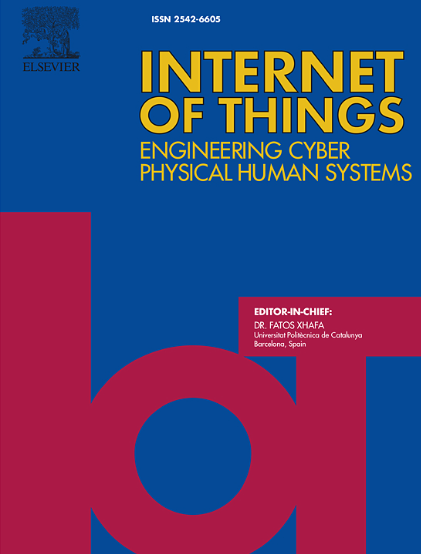利用双频 WiFi 信号的多通道卷积神经网络与注意力机制,用于智能楼宇的室内定位系统
IF 6
3区 计算机科学
Q1 COMPUTER SCIENCE, INFORMATION SYSTEMS
引用次数: 0
摘要
室内定位服务是智能楼宇最重要的物联网(IoT)服务之一,它能够检测封闭区域内任何物体的确切位置。室内定位是物联网的一个重要方面,由于其无处不在,通常依赖于 WiFi 接入点的接收信号强度指示器(RSSI)值。然而,室内定位系统面临着 RSSI 差异、设备多样性和指纹相似性等挑战。为了应对这些挑战,大多数现有方法都采用了机器学习和深度学习技术。然而,大多数现有方法通过滤波或信号转换等预处理步骤引入了额外的开销。此外,这些方法通常对不同频段使用相同的特征空间,从而忽略了不同频段的特定统计相关性。为了缓解这些问题,并在不增加额外硬件的情况下提高准确性,本文提出了一种利用 2.4 GHz 和 5 GHz WiFi 信号的双频方法,即使用多通道卷积神经网络回归注意机制(MC-ACNNR)。该方法旨在捕捉每个频段数据的高级相关性,并通过结合来自不同信道的两个特征图来融合高级模式。所提出的方法在两个数据集的四座建筑物的信号图上进行了测试:UTMInDualSymFi和SODIndoorLoc。结果表明,与文献中的现有方法相比,所提出的方法实现了更高的定位性能。本文章由计算机程序翻译,如有差异,请以英文原文为准。
Multi-channel convolutional neural network with attention mechanism using dual-band WiFi signals for indoor positioning systems in smart buildings
One of the most crucial Internet of Things (IoT) services for smart buildings is the indoor positioning service, which enables the detection of the exact location of any object within a closed area. Indoor localization, a significant aspect of Internet of Things, often relies on Received Signal Strength Indicator (RSSI) values from WiFi access points due to their ubiquity. However, the indoor localization systems face challenges like RSSI variance, device diversity, and fingerprint similarities. To address these challenges, most existing methods utilize machine learning and deep learning techniques. However, most existing methods introduce additional overhead through pre-processing steps such as filtering or signal transformation. Moreover, they commonly use the same feature space for different frequency bands, which causes ignores the specific statistical correlations of different frequency bands. To mitigate these issues and enhance accuracy without extra hardware, this paper proposes a dual-band approach utilizing 2.4 GHz and 5 GHz WiFi signals by using a multi-channel convolutional neural network regression with attention mechanism (MC-ACNNR). It aims to capture high-level correlations for each band data, and to fuse high-level patterns by combining two features map coming from different channels. The proposed method is tested on signal maps from four buildings across two datasets: UTMInDualSymFi and SODIndoorLoc. The results show that the proposed method achieves higher positioning performance compared to existing methods in the literature.
求助全文
通过发布文献求助,成功后即可免费获取论文全文。
去求助
来源期刊

Internet of Things
Multiple-
CiteScore
3.60
自引率
5.10%
发文量
115
审稿时长
37 days
期刊介绍:
Internet of Things; Engineering Cyber Physical Human Systems is a comprehensive journal encouraging cross collaboration between researchers, engineers and practitioners in the field of IoT & Cyber Physical Human Systems. The journal offers a unique platform to exchange scientific information on the entire breadth of technology, science, and societal applications of the IoT.
The journal will place a high priority on timely publication, and provide a home for high quality.
Furthermore, IOT is interested in publishing topical Special Issues on any aspect of IOT.
 求助内容:
求助内容: 应助结果提醒方式:
应助结果提醒方式:


